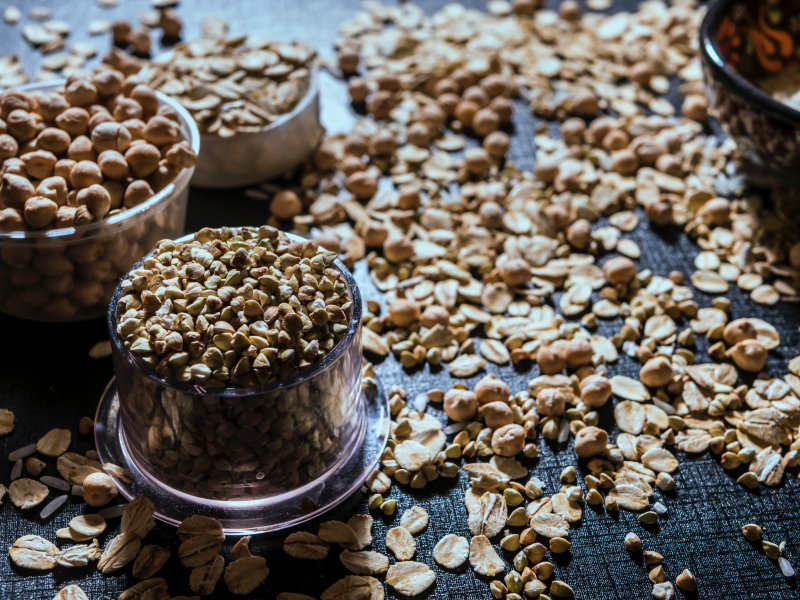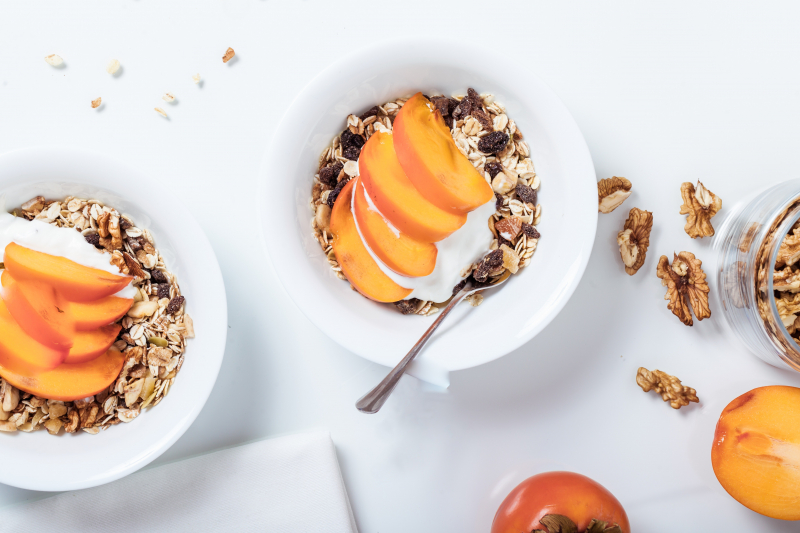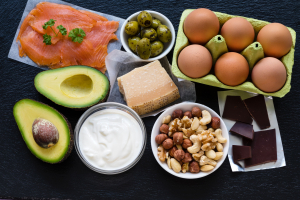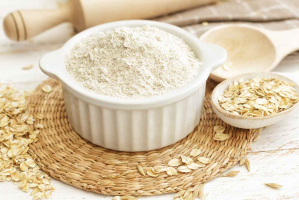Top 10 Best Diabetes Diets
Diabetes can be a difficult disease to control and diet plays a very important role in its care and treatment. Healthy eating habits, science to help control ... read more...blood sugar effectively. At the same time, supplementing a reasonable diet, helping to strengthen the resistance of the patient. But what constitutes a healthy diet can be different for people with diabetes and those who just want to lose a few pounds. Here are the best diabetes diets recommended by the world's top doctors.
-
DASH, which stands for Dietary Approaches to Stop Hypertension, can be traced back to the 1990s and is primarily used to prevent hypertension. According to a study by Diab Spectrum, more than half of adults with diabetes have high blood pressure. Similar to the Mediterranean diet, the plan recommends eating fruits, vegetables, and whole grains, along with lean protein sources like fish and poultry, and healthier fats like beans, nuts and vegetable oils, in addition to low-fat and fat-free milk is also recommended. And of course, this diet restricts salt intake, as too much salt can lead to high blood pressure. The standard DASH diet limits sodium to 2,300 milligrams, the equivalent of 1 teaspoon of table salt per day.
The DASH Diet is not an eating plan that you follow for a short time. It is designed to be a long-lasting part of diabetes nutrition. You can easily start by omitting soft drinks or adding fruits and vegetables to each meal. You can eat whatever you want while controlling your diabetes and protecting your heart. The core of this diet is moderation and balance. No diet is specifically recommended to prevent type 2 diabetes, but the DASH diet reduces the risk of a future type 2 diabetes diagnosis by 20%.

Image by Jay Abrantes via pexels.com 
Image by Anna Shvets via pexels.com -
The Mediterranean Diet is based on the traditional diets of 21 Mediterranean countries, represented by Greece, Italy, Croatia, Lebanon, Turkey and Monaco. In a nutshell, based on years of research and evidence, prioritize plant foods like fruits and vegetables, whole grains, beans, nuts, seeds, seafood, lean poultry, and unsaturated fats made from extra virgin olive oil. The Mediterranean diet isn't just about what you eat, it's also about how you eat. Taking the time to enjoy your meal, rather than eating while moving or watching TV, can help improve your health.
There are several reasons why the Mediterranean Diet is good for diabetes. First, it's flexible. It's not a strict diet plan so you can completely tailor it to suit your goals. To control diabetes, you need to make changes to your lifestyle. Switch to a more homemade diet, increase activity, incorporate healthier foods into your Mediterranean diet. This diet also emphasizes high-fiber foods like whole grains, legumes, and fresh produce. Fiber is digested slowly, slowing the rate at which sugar enters the bloodstream, preventing blood sugar spikes. Many studies have shown that this diet not only reduces the risk of type 2 diabetes and cardiovascular disease, but also prolongs life and improves quality of life.

Image by Mike via pexels.com 
Image by Syed Muhammad Afifi via pexels.com -
Combining the words "flexible" and "vegetarian," the Flexitarian Diet was developed by registered dietitian Dawn Jackson Blattner. The principle of the diet that makes all the difference is that even if you are a vegetarian, you still do not completely eliminate meat from your diet. The diet has no clear rules or limits on the number of calories per day. In fact, this diet emphasizes eating mostly fruits, vegetables, legumes, and whole grains; focusing on plant-based rather than animal-based proteins; flexibly combining meats; limiting the use of whole foods; limiting the use of canned or processed foods and limiting sugar and sweets.
Whether you call it a flex diet or a semi-vegetarian diet, the Flexitarian Diet is generally very well-balanced and supported by most nutritionists. Studies have shown that diet offers physical and even psychological benefits for people with type 2 diabetes. It has also been shown to reduce risk by 20% have diabetes. However, diabetics need to be aware of the total amount of carbohydrates in each meal of the day. The Flexitarian Diet can be high in carbohydrates, which can affect blood sugar levels. Combine 30 minutes of exercise a day with this diet or consult your nearest medical center for the best results.

Image by Valeria Boltneva via pexels.com 
Image by Victor Freitas via pexels.com -
The Ornish Diet has been studied in the ongoing Multipoint Cardiovascular Lifestyle Intervention Program (MCLIP) Since 1998, which currently involves more than 1,600 people at more than 22 sites in the United States. Ornish is a vegetarian diet low in fat, refined sugar and animal protein. Preferred foods are fruits, vegetables, whole grains, legumes, soy products, skim milk and protein. Limit fat-free dairy products (up to 2 servings per day) and refined carbohydrates (polished flour, sugar, sweeteners, white rice). The diet is thought to work by activating genes that promote health while reversing aging at the cellular level.
Unlike many other diets, the Ornish Diet is simple and easy to follow because you don't have to count calories or track nutrient intake. However, meat, fish and poultry are not included in the diet, allowing only limited amounts of high-fat foods such as nuts, seeds and vegetable oils. Fruits, vegetables, whole grains, legumes, and soy products are staples of the adult diet and should make up the bulk of your diet. Caffeinated beverages, refined carbs, sugar, alcohol and low-fat foods should be limited. In addition to changing your diet, you should also exercise for at least 30 minutes a day for maximum results.

Image by ROMAN ODINTSOV via pexels.com 
Image by Jenna Hamra via pexels.com -
The MIND Diet, which stands for Mediterranean-DASH Intervention for Neurodegenerative Delay, was developed by Martha Clare Morris - a nutritional epidemiologist at Rush University Medical Center. The MIND diet focuses on foods of plant origin, favoring berries (strawberries, blueberries, raspberries, grapes...); leafy green vegetables, cruciferous vegetables; Limit animal products, which are rich in saturated fats like beans, nuts, fatty fish and olive oil, and drink no more than one glass of wine a day. According to a study from Tufts University (USA), a diet rich in green leafy vegetables helps reduce inflammation and oxidative stress, two factors linked to a number of diseases such as diabetes, Alzheimer's and cancer.
The MIND Diet can help prevent or control diabetes. And like the DASH and Mediterranean diets, the MIND diet's menu follows the recommendations of the American Diabetes Association. A study published in the August 2013 issue of the journal Diabetologia found that people who follow a Mediterranean diet have a lower risk of developing type 2 diabetes than others. The study was based on dietary and diabetes data from more than 22,000 people who were followed for more than 11 years. Key researchers found that supervisors who followed the strictest Mediterranean diet had a 12% lower risk of diabetes than those who did not.

Image by Nicola Barts via pexels.com 
Image by Robbie Owen-Wahl via pexels.com -
According to the Mayo Clinic, the diabetes diet is a healthy, natural eating plan that is rich in nutrients and low in fat and calories. The menu of this diet is based on the Mayo Clinic pyramid and includes foods in descending order of calories. Choose lean chicken for protein and create a balanced diet. Sugar, with the exception of natural fructose, is prohibited in the Mayo Clinic Diet for the first two weeks and used sparingly thereafter.
This reliable weight loss plan is just what you need to keep your blood sugar under control. The Mayo Clinic doctors developed the Mayo Clinic Diabetes Diet as a two-phase plan that is 'Lost it!' and 'Live It!'designed to help participants lose one to two pounds a week until a healthy weight is reached, and then to keep the pounds off.. It helps people at risk of diabetes prevent and treat diabetes by losing weight quickly, safely and maintaining that weight loss effect. The Mayo Clinic Diabetes Diet addresses barriers to weight loss, including lack of exercise, unhealthy eating, lack of cooking time, busy schedules and cravings. Stick with this weight loss program and you will not be disappointed with the results it brings. For faster and better results, incorporate 30 minutes of exercise each day.

Image by Jane Doan via pexels.com 
Image by The Lazy Artist Gallery via pexels.com -
TLC stands for Therapeutic Lifestyle Changes, a diet created by the US National Institutes of Health (NIH) with the goal of helping dieters lower cholesterol through heart-healthy foods and lifestyle changes. This diet emphasizes whole foods that are high in soluble fiber, low in saturated fat and low in cholesterol. To achieve great results with the diet, you need to follow some rules. Reduce saturated fat to less than 7% of your daily calories, consume less than 200 milligrams of cholesterol per day, and add stanols or plant sterols found in vegetable oils and margarine. In particular, you should eat plenty of fruits, vegetables, whole grains, low-fat or fat-free dairy products, fish and poultry with skin on.
People with type 2 diabetes can reap certain benefits by following the TLC Diet, which includes small adjustments to fit their needs. According to a study in the October 2014 European Journal of Clinical Nutrition, a small study of 31 people with the condition found that replacing red meat with legumes reduced blood sugar, cholesterol levels and improved blood sugar control. Remember that in addition to a good diet, exercise, sleep and other lifestyle factors also play an important role in your overall health. Combine the above factors to get the best health effect.

Image by Jane Doan via pexels.com 
Image by Alexander Mils via pexels.com -
The Volumetric Diet, created by Barbara Rolls, PhD, professor, researcher, and director of the Human Digestive Behavior Research Laboratory at Penn State University, provides in-depth instruction , recipes and information on how to calculate the calorie density of your favorite foods. The diet encourages you to eat foods that are nutrient-dense, low in calories, and high in water, such as fruits, vegetables, and soups. This will help you feel full while eating fewer calories. Meanwhile, it limits high-calorie foods like cookies, candy, nuts, seeds, and oils.
The Volumetric Diet classifies foods into four categories based on their energy density. Category 1 - Foods with very low energy density (less than 0.6 calories per gram), Category 2 - Foods with high energy density and low calorie content (0.6-1.5 calories per gram) , Category 3 - Moderately high-energy foods (1.6-3.9 calories per gram) and Category 4 - High-energy foods (4-9 calories per gram). Unlike most temporary diets, the Volumetrics diet should be viewed as a long-term lifestyle change. However, meals can take longer and require more cooking at home. In addition to reducing your risk of diabetes, adding fruits and vegetables rich in fiber and plenty of water to your diet can help you lose weight, support a healthy gut, and reduce your risk of heart disease and cancer.

Image by Rama Khandkar via pexels.com 
Image by Engin Akyurt via pexels.com -
The anti-inflammatory diet was created by Andrew Weil, MD, a renowned physician and integrative medicine specialist. This diet is designed as a lifelong diet, focusing on nutritious foods. Essentially, this anti-inflammatory diet plan is a modification of the Mediterranean diet that has been shown to help reduce inflammation and reduce the risk of cardiovascular disease and diabetes.
The Dr. Weil’s Anti-Inflammatory Diet emphasizes high-fiber, low-glycemic carbohydrates like beans, lentils, and brown rice; colorful fruits and vegetables such as tomatoes, berries and green leafy vegetables; fish, preferably oil, wild caught, cold water; extra virgin olive oil, avocado and nuts for healthy fats. Also, limit harmful foods such as cold cuts, bacon, chips and other processed foods; cakes, donuts and other foods high in trans fats; fatty meats and full-fat dairy products. Omega-3 fatty acids are an important nutrient in this diet, so make sure you get them from fish or fish oil supplements twice a week. Replace chocolate with dark chocolate with at least 70% cocoa. Do not eat processed, refined or manufactured foods. As long as you're not a fan of red meat, this eating plan offers flexibility and variety. This diet requires you to cook more for yourself. You may need to go to the grocery store to buy fresh produce and seafood. Cleaning and preparing fresh produce can take time. Weil doesn't endorse any specific exercises, but she recommends staying active.

Image by Huy Phan via pexels.com 
Image by Ella Olsson via pexels.com -
Weight Watchers (WW) was a 1963 weight loss program in which members kept track of their individual scores - scores assigned to foods and beverages based on nutritional and dietary value diet). Members track both their diet and exercise through the WW app or website. Core programs include on-demand workouts and 24/7 live coaching, while still including proven personalized nutrition plans. WW's diabetes-appropriate program was developed by nutritionists and behavioral scientists with the goal of a typical WW program, but with recommendations from the American Diabetes Association and the American Diabetes Federation. Diabetes International when formulating an individual's nutritional plan. The diet is designed to guide you away from sugary foods and starchy foods like potatoes, bread, rice or pasta and towards foods rich in fiber, protein and nutrients.
According to American Diabetes Association guidelines, Weight Watchers's diabetes-appropriate program prioritizes foods that help maintain blood sugar levels throughout the day. Studies have shown that WW can help people with prediabetes or type 2 diabetes lose weight and improve blood sugar control. The best results are achieved when the program is combined with a CDE consultant. It is a diet method that anyone can easily follow. You don't have to go hungry with this diet. The daily score is high enough to allow for three meals and at least two snacks per day. Members are also assigned a customizable and flexible weekly score.

Image by Jane Doan via pexels.comRemove 
Image by The Lazy Artist Gallery via pexels.comRemove






























